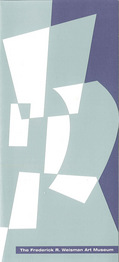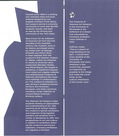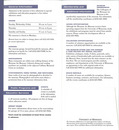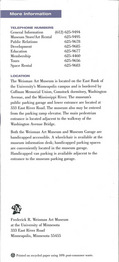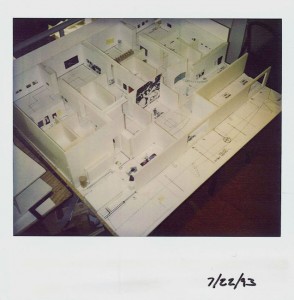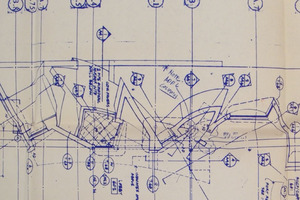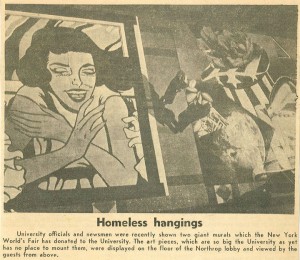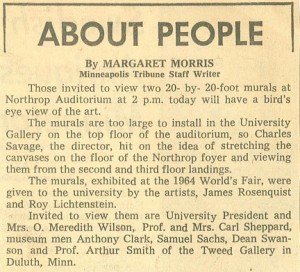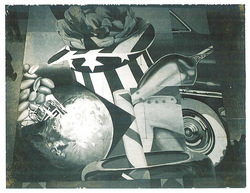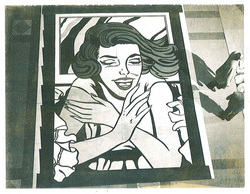On a typical shift in the archives processing room, I often sit across the room from another intern who is working on a different project sorting through handwritten letters – one type of archival material.
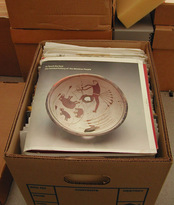 What is interesting to me about the WAM collection is that I often don’t know what to expect – what type of material to expect – when removing the lid of the next box.
What is interesting to me about the WAM collection is that I often don’t know what to expect – what type of material to expect – when removing the lid of the next box.
For instance, take a Tuesday afternoon from two weeks ago. I removed the lid of soon-to-be box 116 to find the draft of a catalogue for a Mimbres pottery exhibition right on top of the folders. The draft, too large to fit upright in the standard archival box, had been casually placed on top. I made note of the oversized material and set it aside along with other items we’ve encountered that didn’t quite “fit.”
After getting through a few folders, I was taken aback upon opening the front fold of a folder containing planning correspondence for the Mimbres pottery exhibit, as a mysterious foreign object flew up and landed back down on the folder. Not really sure what it was – I convinced myself it was a old dried up piece of granola or a stray piece of corkboard – and logically determined it should not be kept in the folder, but rather discarded.
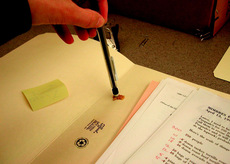
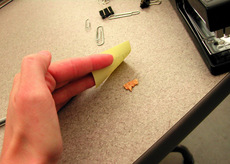
That was soon followed by a dry and crumbly rubber band that had partially attached itself like a parasite – through some scientific process – to correspondence from The Supreme Council of the Scottish Rite. Another rubber band contained within the folder shattered like glass upon touch…
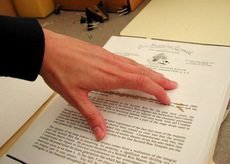
And then there was a cut-out of an ear of corn…
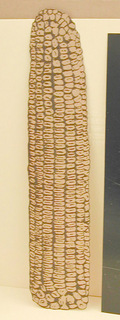
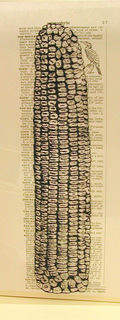
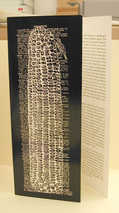
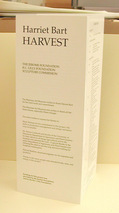
Upon further examination, it was revealed to be part of the design of a brochure for a public work of art by artist Harriet Bart titled, “Harvest” that was installed/planted outside the Weisman in 1996.
Because the WAM collection contains the former working files of museum employees, processing the material gives us great insight into the personal organizational habits of certain individuals. For example, who ever was proofreading a draft of the label text to be used for the Mimbres pottery exhibit, cared to mark a passage with a sticky “Memo from Hell.”
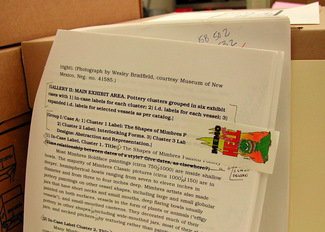
Is this “memo” literal, or whimsical?
From my perspective, the presence of it in the WAM collection… is pretty typical.
